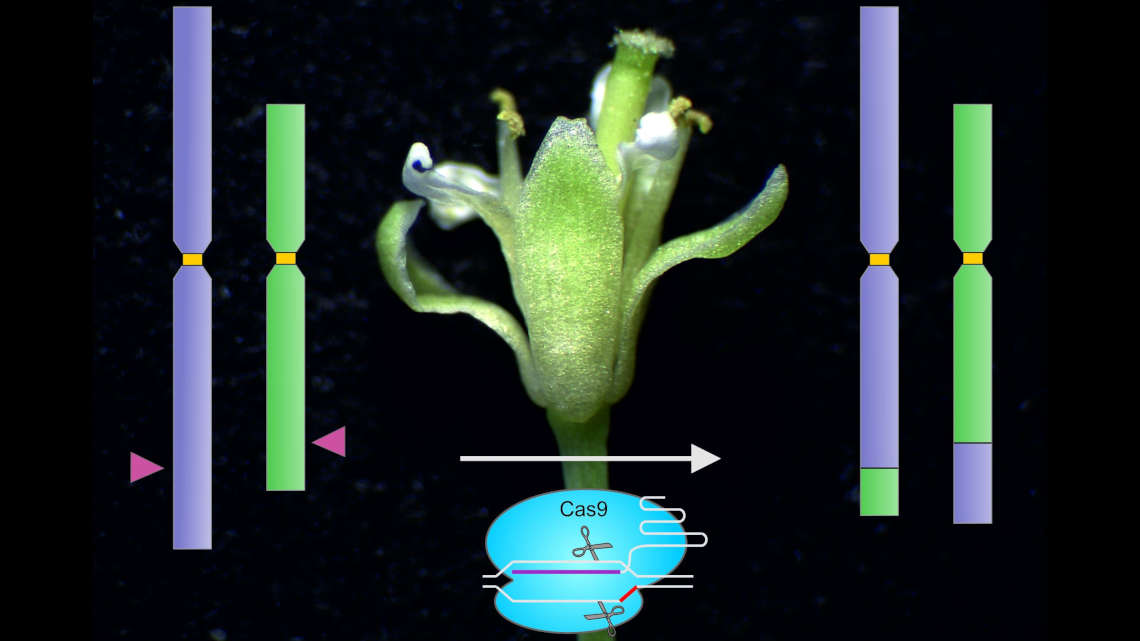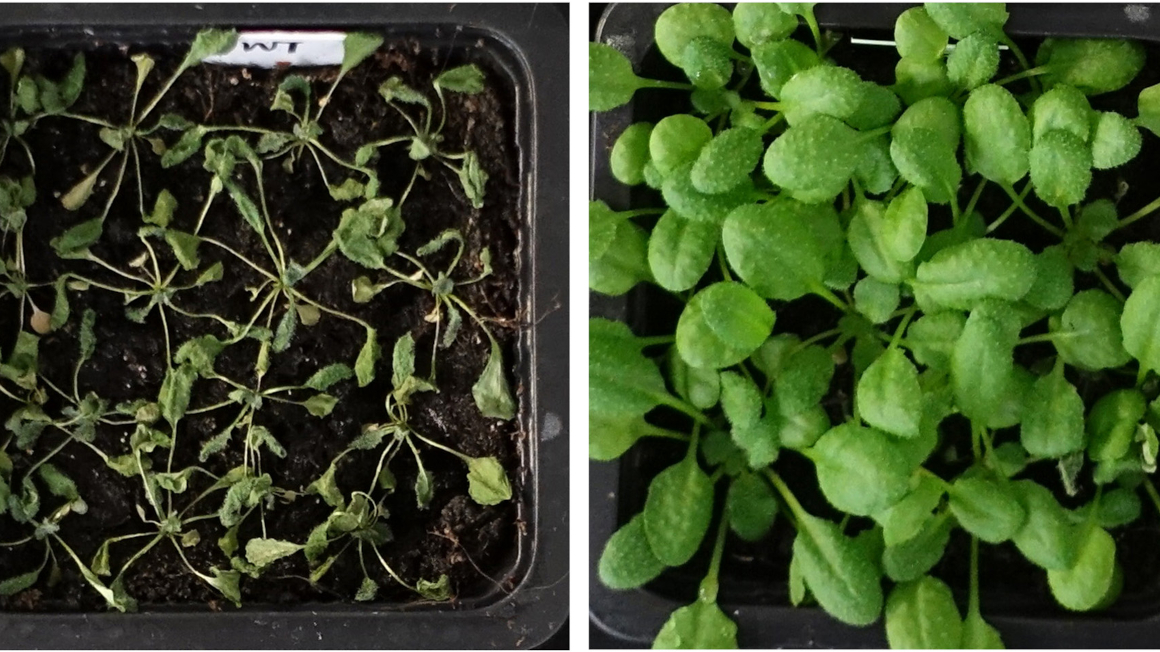Genetic scissors convert chromosomes
Genome editing at a higher level: Plant researchers from Karlsruhe and Gatersleben have used the molecular scissors CRISPR-Cas9 for the first time to exchange chromosome arms.

Not just changing individual genes but replacing entire chromosome pieces - a German team of plant researchers has taken the application possibilities of the CRISPR-Cas9 molecular scissors to a new level. The team around Holger Puchta from the Karlsruhe Institute of Technology (KIT) and colleagues from the Leibniz Institute of Plant Genetics and Crop Plant Research (IPK) in Gatersleben report on this further development of genome editing in the journal "Nature Plants". The European Research Council has funded the project named CRISBREED with an Advanced Grant of 2.5 million euros.
Entire chromosome pieces exchanged
An organism's DNA molecule is tied up in a series of packets, the so-called chromosomes, during cell division. Every living being carries a characteristic number of chromosomes. "The individual genes are arranged in a fixed order on the chromosomes," explains Puchta. "So far, CRISPR-Cas has only been able to achieve changes in individual genes. Now we can alter entire chromosomes and reassemble them." By using the CRISPR-Cas system, the researchers have specifically induced so-called translocations - a mutual remodeling of the chromosome arms. In cells of the model plant Arabidopsis thaliana, the researchers succeeded in exchanging the arms of chromosomes 1 and 2 as well as 1 and 5.
This allows the separation of genes that were previously located next to each other on the chromosome and were therefore closely coupled. Because the changes are permanent and hereditary, this offers great opportunities for plant breeding: "We now have the possibility to control the alteration of chromosomes in a directional way and to strengthen or loosen links between features in a targeted manner," Puchta is pleased and looks ahead optimistically: "In the future, this controlled restructuring of the genome will revolutionize plant breeding."
Advantage over classical breeding
In classical breeding, variety optimization is based on selecting parent plants that combine desirable traits. If these traits are inherited naturally, then in most cases those traits are also inherited whose causal genes are located in close proximity to the gene for the desirable trait. If these are inherited in a natural way, the properties whose causative genes are in close proximity to the gene for the desired property are usually also inherited. Geneticists speak of coupled genes, because a descendant usually receives both or none of the genes. In the case of particularly close coupling, it may therefore be impossible to remove an undesirable characteristic from a variety by natural means without also losing the positive characteristic. The use of classical genetic engineering in plant breeding, especially in Europe, is little accepted because it involves introducing foreign genes into an organism. Genome editing, on the other hand, is a third way around this issue. It simply modifies existing genes of a plant in a way that could be done by natural processes.


